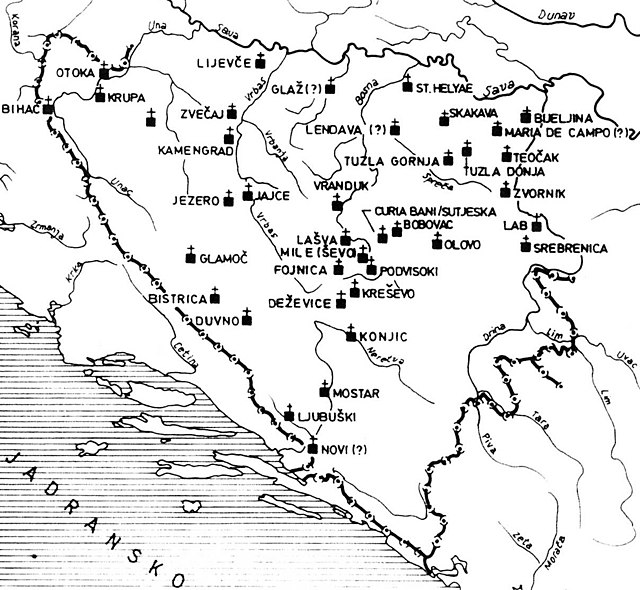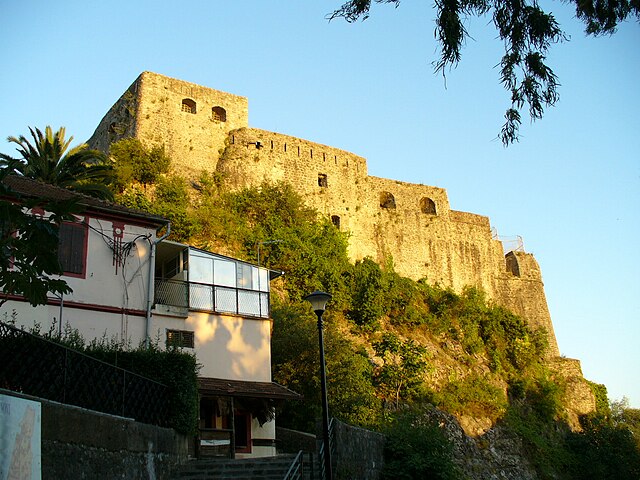Stjepan Vukčić Kosača (1404–1466) was a powerful Bosnian nobleman who was politically active from 1435 to 1465; the last three decades of Bosnian medieval history. During this period, three kings acceded to the Bosnian throne: Tvrtko II, Thomas (Tomaš), Stephen Tomašević (Stjepan Tomašević) and anti-king Radivoj—the older brother of King Thomas—before the country was conquered by the Ottomans.
Blagaj, near Mostar, the seat of Kosača
Fortress Novi, today in Hercg Novi, winter seat of Kosača.
Ključ , developed by Sandalj, was Kosača's favorite residence, along with Blagaj and Novi.
Klobul fortress, at the northern approach to Trebinje, was the last stronghold of Pavlovićs in their lands in the south, before it was taken over by Stjepan Vukčić
Bosnia and Herzegovina in the Middle Ages
The history of Bosnia and Herzegovina in the Middle Ages refers to the time period between the Roman era and the 15th-century Ottoman conquest. The Early Middle Ages in the Western Balkans saw the region reconquered from barbarians (Ostrogoths) by the Byzantine Emperor Justinian I, followed by raids and migrations carried out by Slavic peoples in the 6th and 7th centuries. The first mention of a distinct Bosnian region comes from the 10th-century Byzantine text De Administrando Imperio. By the late 9th and early 10th century, Latin priests had Christianized much of Bosnia, with some areas remaining unconverted. In the High Middle Ages, Bosnia experienced economic stability and peace under the Ban Kulin who ruled over Banate of Bosnia from 1180 to 1204 and strengthened its ties with the Republic of Ragusa and with Venice. The Kingdom of Bosnia emerged in the Late Middle Ages (1377). The kingdom faced internal and external conflicts, eventually falling under Ottoman rule in the late 15th and early 16th centuries.

Franciscan monasteries in 15th century Bosnia.





